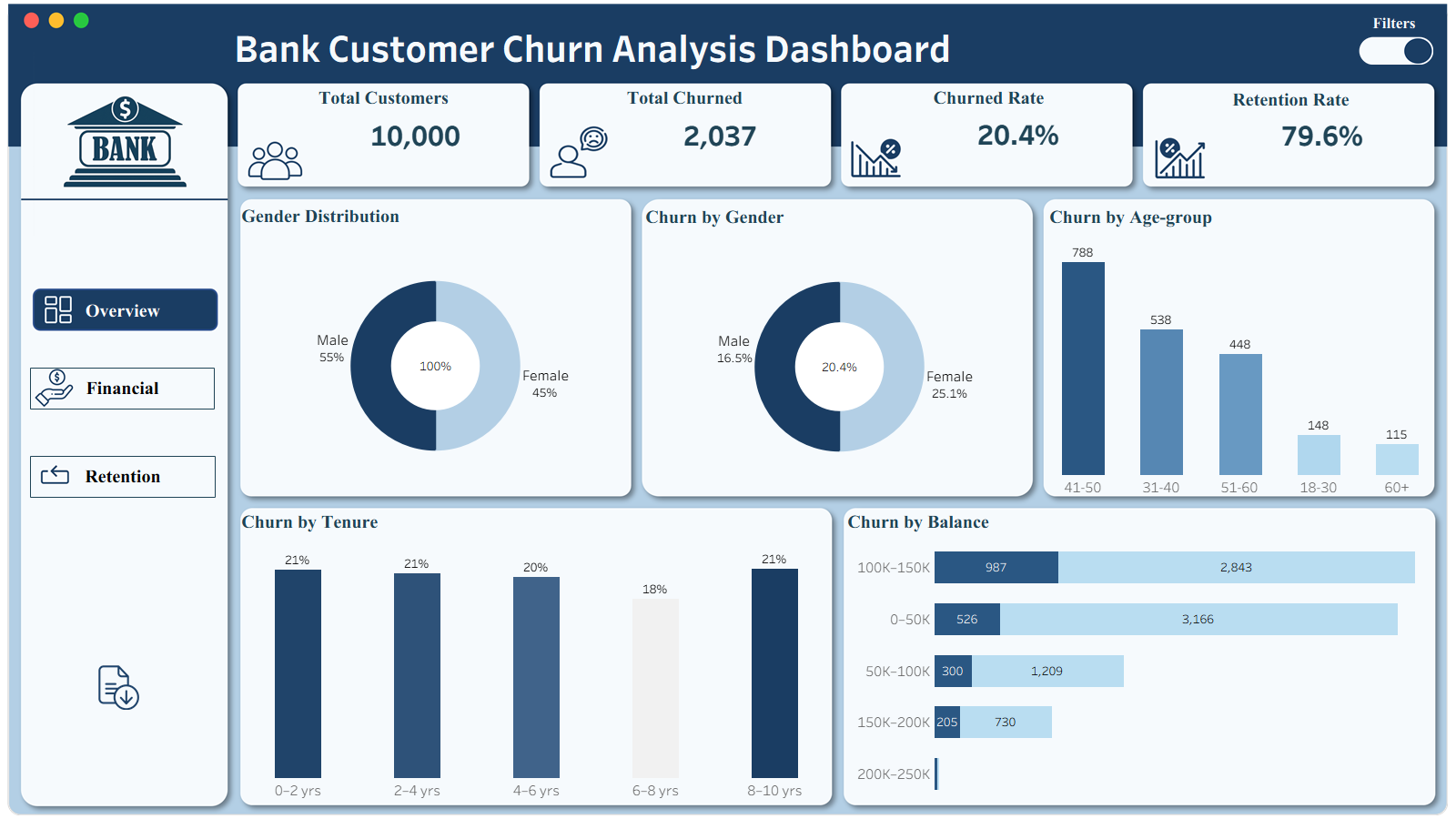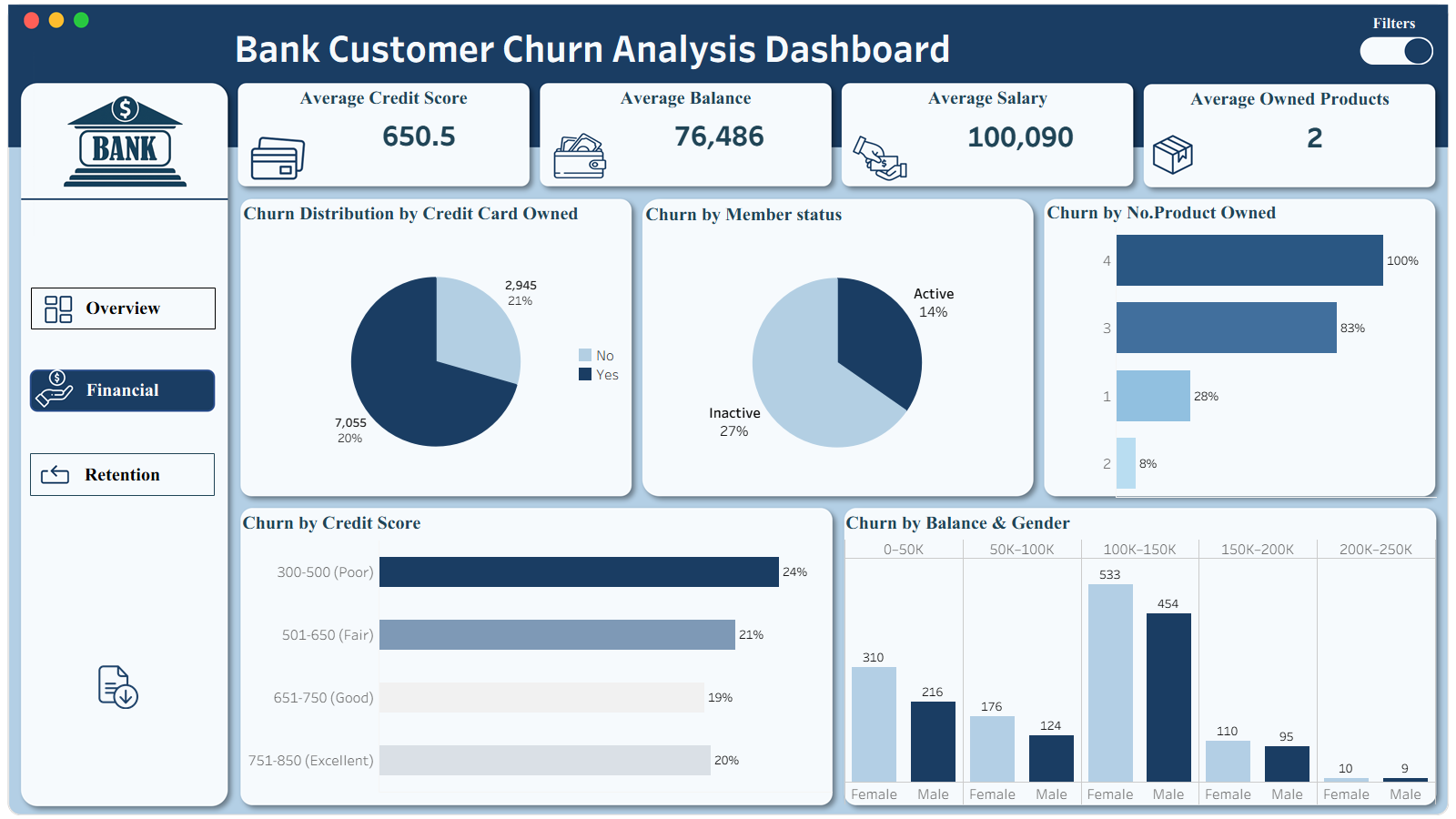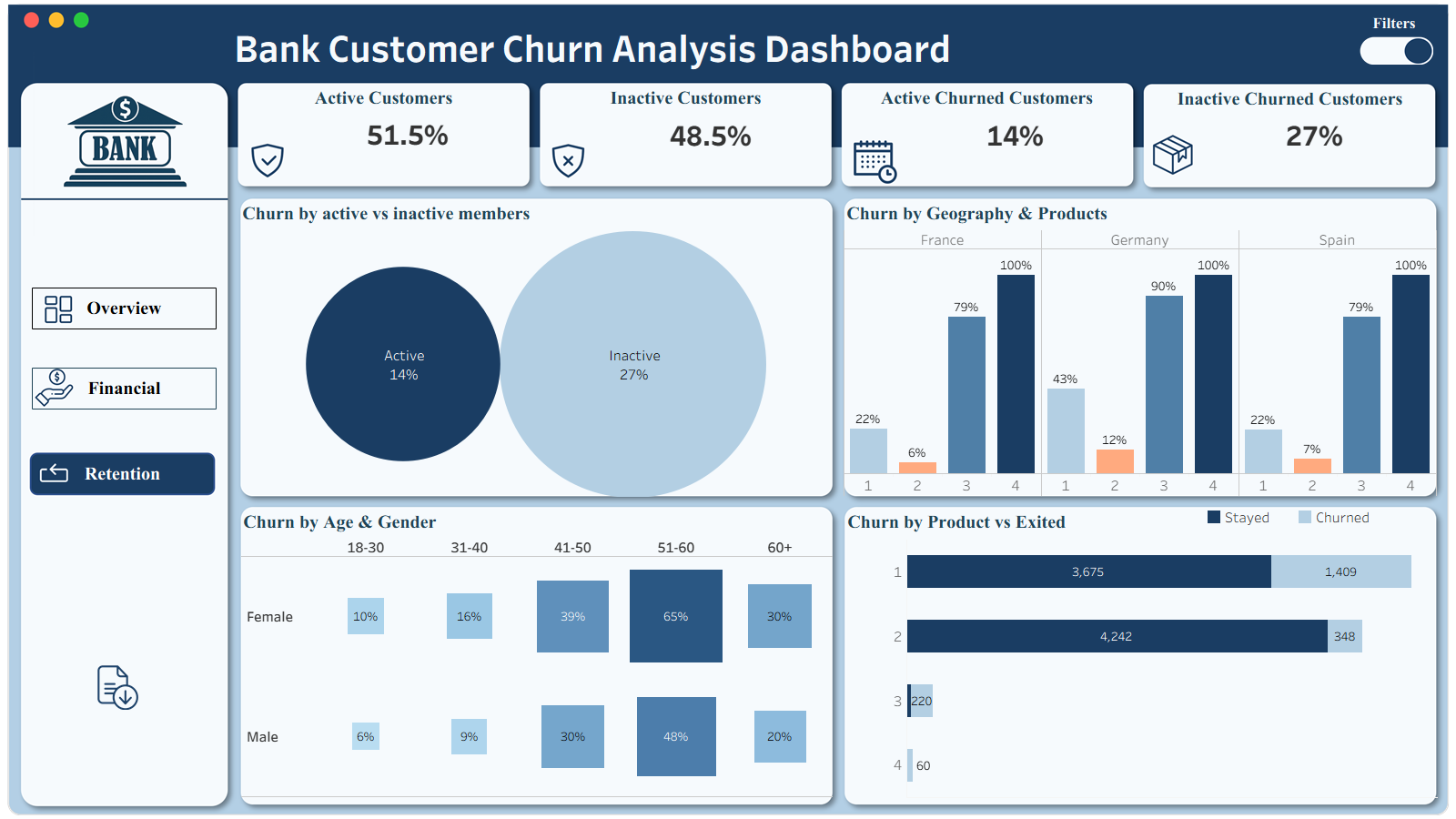Bank Customer Churn Analysis Dashboard | Case Study
__________________________________________________________________________________________________________________________________________Project Overview
This project provides a deep understanding of customer behavior and attrition patterns in a retail bank. The project combines Python exploratory data analysis (EDA) with Tableau dashboards to uncover why customers leave and how to retain them.The final deliverable includes three interactive dashboards:
- Overview Dashboard – Executive summary of churn & demographics
- Financial Dashboard – Customer churn by financial profile
- Retention Dashboard – Retention insights by engagement & product usage
Business Problem
The bank was experiencing a 20.4% churn rate, translating into a substantial loss of long-term customers and potential revenue. Management lacked visibility into who is churning, why they churn, and how engagement affects loyalty. This project aimed to analyze churn drivers, visualize trends, and recommend strategies to reduce churn.
- Data Exploration
Conducted EDA using Pandas, NumPy, and Matplotlib. Grouped customers by Age, Geography, Credit Score, and Tenure. Identified relationships between churn and key factors like activity level and product count.
- Data Preparation
Cleaned dataset and created categories: Age Groups, Credit Score Bands , Tenure Ranges. Created calculated fields: Churn Rate and Retention Rate.
- Dashboard Development
Designed 3 dashboards with KPIs, filters, and visually distinct charts. Used icons, custom color themes, and modern layout for professional storytelling.
Methodology
- Python: Pandas, Matplotlib, Seaborn
- Tableau: Calculated fields, KPI cards, interactive filters, dashboard design
- Excel: Data validation, formatting, performance metrics
- Analytical Skills: Trend analysis, customer segmentation, churn factor correlation
Skills Used
Dashboard 1:

- Majority of customers (41–50 age group)show the highest churn rate.
- Males and females churn almost equally, with slightly higher female attrition.
- Low-tenure customers (<4 years).
- Low-balance accounts are more likely to churn.
Insights
- Develop targeted retention campaigns for customers aged41–50, focusing on personalized offers, loyalty programs, or financial planning support to increase engagement.
- Conduct satisfaction surveys across both genders to identify subtle service experience gaps, ensuring retention strategies are inclusive and effective.
- Implement onboarding and early engagement programs for new customers (tenure (<4 years)) to build stronger relationships and reduce early churn.
- Offer tailored financial products or incentives for low-balance customers, such as savings bonuses or low-fee accounts, to improve their perceived value and encourage longer retention.
Recommendations
Dashboard 2:

Insights
- Customers with credit scores below 650 have higher churn (~24%).
- Extremely low or zero balances are a concern.
- Single-product customers churn more; multi-product users show stronger loyalty.
- Credit card ownership and activity correlate with lower churn.
Recommendations
- Launch credit score improvement initiatives such as personalized financial advice or low-interest consolidation options to support customers with scores below 650, reducing financial stress and churn risk.
- Promote account engagement among low-balance customers by introducing minimum balance rewards or gamified saving challenges that encourage consistent deposits.
- Encourage product bundling by offering cross-selling incentives (e.g., pairing savings accounts with credit cards or investment options) to strengthen loyalty among single-product users.
- Enhance credit card engagement programs — such as cashback, point systems, or exclusive offers — to retain active cardholders and further reduce churn among this profitable segment.
🔹 Dashboard 3:

Insights
- Inactive customers churn almost twice as often as active members.
- High-product customers (3–4 products) show the lowest churn.
- Regional differences observed (e.g., France & Germany higher churn vs Spain).
- Among active customers, women aged 41–60 show elevated churn.
Recommendations
- Re-engage inactive customers through personalized campaigns — such as targeted email reminders, loyalty rewards, or dormant account benefits — to reignite activity and reduce churn.
- Promote multi-product adoption by bundling offers and discounts for customers with fewer than three products, leveraging the strong retention patterns seen in high-product users.
- Conduct region-specific churn diagnostics to uncover operational or service differences in France and Germany, and implement localized retention strategies that address cultural or service expectations.
- Design targeted retention offers for women aged 41–60, such as flexible financial planning tools, personalized relationship management, or benefit-driven communication, to strengthen engagement within this key demographic.
Next Steps
- Build a Churn Prediction Model (Logistic Regression / XGBoost).
- Automate dashboards with monthly refreshes from the bank’s CRM.
- Combine with CSAT/NPS data for a 360° customer view.
- Deploy predictive alerts for high-risk customers via email or app notifications.